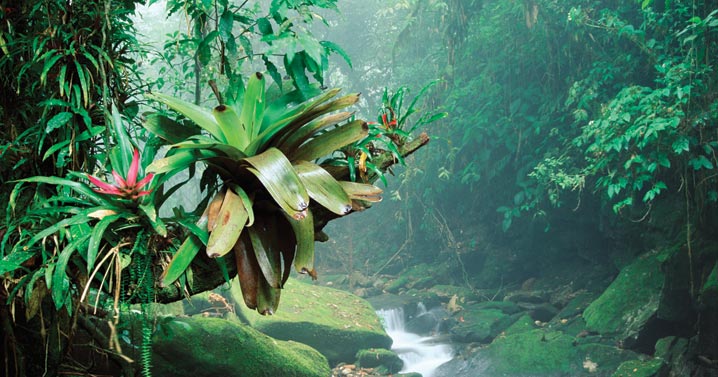The rainforests of Mexico are considered to be one of the most tropical at present. As the name implies, rainforests receive great amount of rainfall each year, that’s why Mexico holds a considerable variation of species of plants and animals. Besides that, the location of the rainforests between the North and South America is important to the migration of other species of animals.
From the City of Mexico to the Gulf of Mexico in the lower elevations are covered by rainforests—tropical and subtropical. Most rain is received by those near the coasts. The amount of rain accounts for the stability of the climate making it essential for the growth and maintenance of the species. In fact, trees are normally reaching the height of 30 meters with dominant species like Mahogany and the Sapodilla. In areas with higher latitudes, rainforests are amazingly covered with fog supporting the growth of aerial plants called epiphytes, ferns and mosses.
It is claimed that tropical rainforests hold about 50 to 90 percent of all species on Earth. In Mexico, the rainforests houses 2,000 species of plants. No wonder the Amazon rainforest provides a fifth of the world’s oxygen. Of course, Mexico rainforests will never be least in providing home to several animal species. It includes 40 reptiles, 15 species of amphibians, 90 mammal species, and over 200 varieties of birds. As we look to it, you will never get bored of animal and plant watching because your eyes will definitely be amazed of its rich biodiversity.
Unfortunately, Mexico rainforests also house different endangered species of animals. It includes species of big cats like the jaguar, jaguarundi, and the ocelot. Not just that, there are also Spider Monkey, Coati, and Kinkajou species of animals that are considered threatened.
Dangers of the Rainforests of Mexico
As all remaining rainforests in the world, Mexico cannot escape threats to its survival. According to studies and monitoring, over 500,000 hectares of Mexico’s tropical and subtropical rainforests are destroyed each year. Several threats account to its destruction like industrialization, agricultural expansion, logging, and the collection of raw materials by the locals. Because of destruction of habitat, about 285 species of vertebrates are in the alarming condition.
Photo credits: http://www.edf.org
Photo credits: http://www.edf.org

h(252)c(1)/6440d452659ab5d4687a20c425a961e9.jpg)



